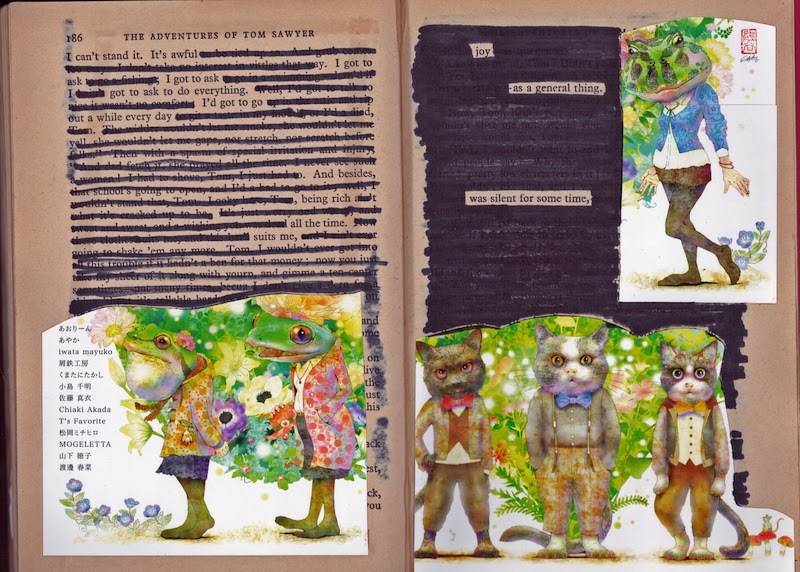FOUND POETRY - what is it ?

I enjoy 'found poetry' very much - there are a few techniques around this, each providing a found poem. (© Gina altered book found poem) In essence found poetry is finding the poetic in the non-poetic and reimagining existing language to create something new and meaningful. Here are a few possibilities and techniques. 1. ERASURE/BLACKOUT POETRY - find an existing text and working your way down the text, lightly circle with a pencil the words that appeal to you i often read and re read the words i have pencilled to see how they run together - with meaning and or logical sequence you are looking to reinterpret the text to create a new meaning or focus using a tool such as texta, whiteout or digital editing begin to blot out all the other words until only the 'poem' is left/revealed. 2. CUT UP POETRY - Cut up words, phrases or sentences from one or more source texts rearrange them to create a new poem, often with a different meaning or focus than the original text 3. CEN...
%20published.jpg)
%20published.jpg)
%20published.jpg)
%20published%202025.jpg)


%20published%202025.jpg)
edited.jpg)